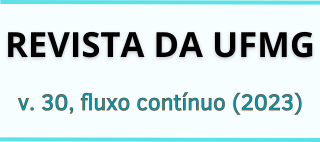Artificial intelligence, blockchain and the chain of custody of evidence in criminal proceedings
DOI:
https://doi.org/10.35699/2965-6931.2023.47605Keywords:
chain of custody, digital evidence, blockchain, criminal procedure law, artificial intelligenceAbstract
This study aims to discuss the use of artificial intelligence and blockchain in the chain of custody of digital evidence and traces. The research is qualitative, and the methodology is based on a hypothetical-deductive method, through the bibliographical review of authors who deal with artificial intelligence, blockchain, technology, and criminal procedural law. Thus, an analysis of the functioning of artificial intelligence and blockchain will be carried out, as well as the main aspects of the chain of custody will be examined, in order to verify its compatibility with the referred technologies. It was concluded, in the end, for the possibility of using artificial intelligence and blockchain to assist in the registration and preservation of the chain of custody, within the scope of Brazilian law, given the security that this type of technology provides.
Downloads
References
BADARÓ, Gustavo Henrique. Processo penal. 8. ed. rev., atual. e ampl. São Paulo: Thomson Reuters Brasil, 2020.
BRASIL. Decreto-Lei 3.689, de 03 de outubro de 1941. Código de Processo Penal. Brasília, DF: Presidência da República, [2020]. Disponível em: http://www.planalto.gov.br/ccivil_03/decreto-lei/del3689.htm. Acesso em: 20 jun. 2023.
BRASIL. Superior Tribunal de Justiça. Quinta Turma. Agravo Regimental em Habeas Corpus n.º 143.169/RJ. Agravante: R.L.S.M. Agravado: Ministério Público do Estado do Rio de Janeiro. Advogado: Marcelo Turbay Freiria. Rel. Min. Jesuíno Rissato. Brasília, 07 de fev de 2023. Disponível em: https://ww2.stj.jus.br/processo/pesquisa/. Acesso em: 26 jun. 2023.
CHATTERJEE, Marina. Data Science vs Machine Learning and Artificial Intelligence: the difference explained, 2023. Disponível em: https://www.mygreatlearning.com/blog/difference-data-science-machine-learning-ai/. Acesso em: 28 abr. 2023.
CHATTERJEE, Marina. Deep Learning Tutorial: What it Means and what’s the role of Deep Learning, 2023. Disponível em: https://www.mygreatlearning.com/blog/what-is-deep-learning/#one. Acesso em: 17 jun. 2023.
DEZEM, Guilherme Madeira. Curso de processo penal. 8. ed. rev., atual. e ampl. São Paulo: Thomson Reuters Brasil, 2021.
KOTSIANTIS, Sotiris B. et al. Supervised machine learning: A review of classification techniques. Emerging artificial intelligence applications in computer engineering, v. 160, n. 1, p. 3-24, 2007.
LECUN, Yann; BENGIO, Yoshua; HINTON, Geoffrey. Deep learning. nature, v. 521, n. 7553, p. 436-444, 2015.
LIMA, Gabriel Ribeiro de; NETO, Marcos Luiz dos Mares Guia. Arbitragem em blockchain: Juridicidade e perspectivas In: PARENTONI, Leonardo; MILAGRES, Marcelo de Oliveira; VAN DE GRAAF, Jeroen (Coords.). MOREIRA, Arthur Salles de Paula; CHAGAS, Ciro Costa;
SANTANA, Mariana Damiani (Orgs). DIREITO, TECNOLOGIA E INOVAÇÃO – v. III: Aplicações Jurídicas de Blockchain. Expert Editora: Belo Horizonte, 2021.
LOPES JR., Aury. Direito processual penal. 16. ed. São Paulo: Saraiva Educação, 2019.
MAINI, Vishal. SABRI, Samer. Machine Learning for humans, 2017. Disponível em: https://everythingcomputerscience.com/books/Machine%20Learning%20for%20Humans.pdf. Acesso em: 28 abr. 2023.
MATIDA, J. A cadeia de custódia é condição necessária para a redução dos riscos de condenações de inocentes. Revista da Defensoria Pública do Estado do Rio Grande do Sul, Porto Alegre, n. 27, p. 17–26, 2021. Disponível em: https://revista.defensoria.rs.def.br/defensoria/article/view/269. Acesso em: 26 jun. 2023.
MOREIRA, Athur Salles de Paula; DELGADO, Camila Campos Baumgratz; SANTOS, Gabriel Gonçalves. Repensando a tecnologia blockchain: por que nem tudo o que você leu até hoje era verdade? In: PARENTONI, Leonardo; MILAGRES, Marcelo de Oliveira; VAN DE
GRAAF, Jeroen (Coords.). MOREIRA, Arthur Salles de Paula; CHAGAS, Ciro Costa; SANTANA, Mariana Damiani (Orgs). DIREITO,
TECNOLOGIA E INOVAÇÃO – v. III: Aplicações Jurídicas de Blockchain. Expert Editora: Belo Horizonte, 2021.
OpenAI. "OpenAI’s GPT-3: Language Models are Unsupervised Multitask Learners." Disponível em: https://openai.com/research/gpt-3/. Acesso em: 28 abr. 2023.
PACHECO, César Augusto Rodrigues; PEREIRA, Natasha Sophie. Deep learning conceitos e utilização nas diversas Áreas do conhecimento. Revista Ada Lovelace, v. 2, p. 34-49, 2018
PRADO, Geraldo. A cadeia de custódia da prova no processo penal. 2. ed. Rio de Janeiro: Marcial Pons, 2021.
SCHNEIER, Bruce. Secret & Lies: Digital Security in a Networked World. Indianapolis: Wiley Publishing, 2000.
TAKAHASHI, Tadao. Sociedade da Informação no Brasil: o livro verde. Brasília: Ministério da Ciência e Tecnologia, 2000.
U.S DEPARTAMENT OF JUSTICE OFFICE OF JUSTICE. Eletronic Crime Scene Investigation: A Guia for First Responders. Second Edition. Programs National Institute of Justice. Dispinível em: https://www.ncjrs.gov/pdffiles1/nij/219941.pdf. Acesso em: 26 jun. 2023.
VAZ, Denise Provasi. Provas digitais no processo penal: formulação do conceito, definição das características e sistematização do procedimento probatório. 2012. Tese de Doutorado. Universidade de São Paulo.
WÜST, Karl; GERVAIS, Arthur. "Do you need a blockchain?." 2018 crypto valley conference on blockchain technology (CVCBT). p. 45-54, IEEE, 2018.
YERMACK, David. Corporate governance and Blockchains. Review of Fiance, Oxford. Vol. 21., p. 7-31, 2017.




